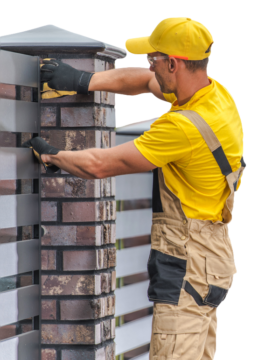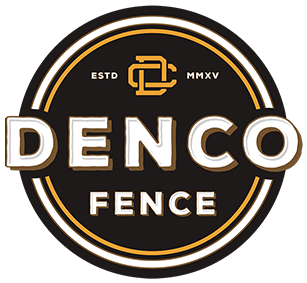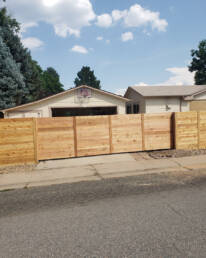Are you considering a DIY fence installation in Denver? Whether you want to enhance your property’s privacy, boost curb appeal, or keep your furry friends safe, a well-constructed fence can do it all. However, tackling a fencing project yourself in the Mile-High City requires careful planning and execution. To help ensure your DIY fence installation goes smoothly, we’ve put together five essential tips for success.
Know the Regulations
Understanding and adhering to local regulations is a fundamental aspect of a successful DIY fence installation in Denver. These regulations are put in place to ensure the safety and aesthetic harmony of the community. Here are some key points to consider when navigating the regulatory landscape:
- Height Restrictions: Denver may have restrictions on the maximum height of fences in different areas, and these regulations can vary depending on your property’s location. Before you decide on the height of your fence, check with your local zoning department to determine the specific height limitations for your area.
- Boundary and Setback Requirements: It’s crucial to know where your property boundaries are and what setback requirements apply to your fence. Failing to respect these boundaries can lead to disputes with neighbors and potential legal issues.
- Permits: Depending on the nature of your fence project, you might need to obtain a permit from the city. This is especially common for more extensive or complex fence installations. Applying for a permit is a critical step, and starting work without one can result in fines and even having to remove your fence.
- Material Restrictions: Some areas may have restrictions on the type of materials you can use for your fence. Be sure to check the local regulations to determine whether there are any limitations on the materials you plan to use.
- Pool Safety Regulations: If your fence is intended to enclose a pool, there are often specific safety regulations you must adhere to. These regulations are designed to prevent accidents and keep children and pets safe. Be aware of these requirements and ensure that your pool fence complies with them.
Understanding and following these regulations is essential not only to avoid legal issues but also to ensure that your fence installation enhances the overall aesthetics and safety of your property and neighborhood.
Plan Your Fence Design
Careful planning of your fence design is the cornerstone of a successful DIY project. Your fence serves various purposes, from providing privacy to enhancing the curb appeal of your home. Here are some considerations to help you plan your fence design effectively:
- Define Your Goals: Start by identifying the primary purpose of your fence. Are you looking to establish privacy, keep pets or children safe, or simply add an appealing feature to your property? Defining your goals will guide your design decisions.
- Complement Your Home: Your fence should harmonize with your home’s architecture and landscaping. Consider the style, color, and materials that will best complement the existing elements of your property. For instance, a picket fence may suit a traditional house, while a sleek, modern fence could enhance a contemporary home.
- Durability and Maintenance: Given Denver’s varying weather conditions, it’s crucial to choose materials that can withstand the climate. Cedar and redwood are popular choices because of their natural resistance to rot and insects. Alternatively, you might opt for composite materials that require minimal maintenance.
- Consider Wind and Snow: Denver experiences strong winds and heavy snowfall at times. These elements can put stress on your fence. Make sure your design includes adequate reinforcement to withstand these conditions. Properly anchoring fence posts and using sturdy materials will help prevent damage.
- Gate Placement: Plan the location of gates carefully to ensure convenient access to your property. Be mindful of pathways and any potential obstructions when deciding on gate placement.
- Future Maintenance: Think about the long-term maintenance needs of your fence. Some materials may require periodic staining or sealing, while others are virtually maintenance-free. Consider your willingness to invest time and effort in maintenance when selecting materials.
By thoroughly planning your fence design, you’ll create a structure that not only meets your needs but also enhances the aesthetic appeal of your property. Careful consideration of these factors will lead to a more satisfying and successful DIY fence installation in Denver.
Gather the Right Tools and Materials
Having the right tools and materials on hand is crucial for a smooth and efficient DIY fence installation in Denver. Here’s an expanded look at this essential step:
Tools Checklist
Assembling a comprehensive set of tools is the first step to a successful project. Some of the tools you will need include:
- Post hole digger or auger: For digging holes for fence posts, which is one of the most physically demanding parts of the job.
- Level: To ensure that your fence is plumb and level for a professional-looking finish.
- Tape measure: Accurate measurements are essential for properly spacing posts and sections.
- Circular saw or reciprocating saw: These are useful for cutting fence materials to the right size.
- Hammer and nails: For attaching pickets to the rails and other smaller components.
- Screws or nails for fastening: Select the appropriate fasteners based on the materials you’re using.
- String and stakes: These are handy for marking your fence line accurately and keeping it straight.
Quality Materials
The choice of materials significantly impacts the longevity and appearance of your fence. In Denver, where weather conditions can be challenging, it’s especially important to select high-quality materials. Consider the following:
- Fence posts: Choose rot-resistant wood like cedar or redwood, or opt for durable metal or vinyl posts. Properly treated wooden posts are essential to prevent rotting in Denver’s climate.
- Fence boards or panels: Pick materials that are designed to withstand weather conditions. Pressure-treated wood, cedar, redwood, or composite materials are good options.
- Hardware: Ensure you have the right hardware for securing your fence components. This includes brackets, hinges, latches, and any other necessary connectors.
Safety Gear
Safety should be a top priority. Gather safety gear such as gloves, safety goggles, ear protection, and a dust mask to protect yourself during the installation process.
Get Your Property Ready
Proper preparation of your property sets the stage for a successful DIY fence installation. Here’s how to get your property ready:
- Utility Location: Before digging post holes, it’s vital to locate underground utilities. Contact your local utility locating service or call 811 to have utility lines marked on your property. This crucial step prevents accidental damage to gas, water, or electrical lines.
- Clear the Area: Remove any obstructions in the fence line. This might include rocks, tree roots, or old fencing materials. Clearing the area ensures a smooth installation process and prevents potential issues down the line.
- Mark the Fence Line: To ensure your fence is straight and follows your property boundaries, use string and stakes to mark the fence line. Measure the distances accurately and double-check your measurements to avoid any discrepancies.
- Set Proper Post Depth: When digging the post holes, consider the frost line in Denver. Frost can cause soil to expand and contract, potentially pushing fence posts out of position. To prevent this, dig your post holes to a depth below the frost line and add gravel at the base for drainage.
Take Your Time with Installation
The installation phase is where precision and patience are crucial for a successful DIY fence project. Here are some additional tips for a smooth installation:
- Post Setting: Properly setting fence posts is essential for stability. Ensure that posts are level, plumb, and securely anchored in the ground using concrete. Take your time during this stage to avoid future problems.
- Accurate Measurements: Measure the distance between posts accurately, especially if you have a long fence line. Even small discrepancies can result in an uneven fence. Double-check measurements to ensure consistency.
- Gate Installation: Gates are essential for access. Take extra care when installing gates to ensure they swing smoothly and securely latch. Check for level and plumb to avoid any sagging or misalignment.
- Quality Workmanship: Pay attention to the quality of your work. Properly attach rails and pickets to ensure they are secure and evenly spaced. Quality craftsmanship will lead to a fence that stands the test of time.
- Take Breaks: Fence installation can be physically demanding. Take regular breaks to stay hydrated and prevent fatigue. Working when you’re tired can lead to mistakes.
Remember that a well-constructed fence enhances your property’s aesthetics, provides security, and offers privacy. By gathering the right tools and materials, preparing your property, and taking your time during the installation process, you can ensure your DIY fence installation in Denver is a success. It’s a rewarding project that, when done right, can add value and functionality to your home.
In conclusion, a DIY fence installation in Denver can be a rewarding project that adds value and functionality to your property. However, it’s crucial to be well-prepared, follow local regulations, and take your time during each step of the installation process. By adhering to these essential tips, you can enjoy the satisfaction of a well-constructed fence that enhances your Denver home. Good luck with your project! Contact us if we can help.

Need an expert opinion? Talk to our experts today!
When you talk to our experts at Denco Fence Company, we’ll help you compare fence styles, share design ideas, and answer any questions along the way. If you’re looking to build or repair a fence that you and your neighbors are going to love, get a free estimate and let us help bring your project to life.

